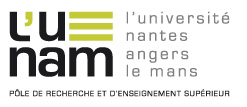Partisan selective exposure in news consumption
Résumé
The development of online social media has raised concerns about how individuals are overexposed to partisan news. However, social media are only a part of the daily media diet of an average consumer (Allcott and Gentzkow, 2017; Allen et al., 2020, Guess et al., 2019). The aim of this paper is therefore to examine partisan news exposure with respect to the entire media diet. We develop a partisan selective exposure index that indicates the over-representation of partisan political opinions in individual daily news consumption. Our analysis of data from a survey of 4000 representative individuals in France regarding their news consumption and political stance shows that on average, partisan exposure is low when social media are excluded. Among traditional media, online versions of newspapers and radio contribute most to partisan selective exposure. The introduction of social media increases the index, especially for the youngest consumers. Another striking result is that the index is higher for far-left and far-right news consumers, and increases to between 55% and 78% for far-left groups, and between 40% and 58% for far-right groups when social media consumption is included.
Domaines
Economies et finances
Fichier principal
 Partisan selective exposure in news consumption_IEP_subm.pdf (762.56 Ko)
Télécharger le fichier
Partisan selective exposure in news consumption_IEP_subm.pdf (762.56 Ko)
Télécharger le fichier
Origine : Fichiers produits par l'(les) auteur(s)

